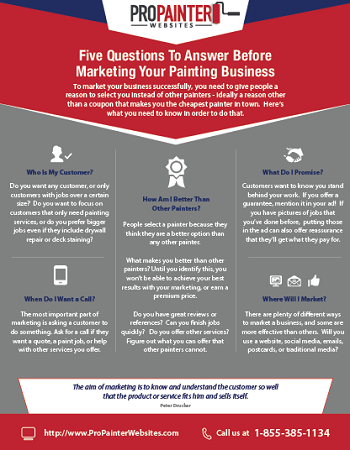Seasonal Factors To Consider For Industrial Exterior Paint: What You Required To Know
Seasonal Factors To Consider For Industrial Exterior Paint: What You Required To Know
Blog Article
Web Content Author-Doherty Decker
When you're planning a business outside paint project, seasonal variables can make or damage your outcomes. Suggested Site 'll wish to take into consideration just how temperature and humidity influence paint application and drying times. Choosing the appropriate period can guarantee your paint sticks appropriately and lasts longer. However which seasons are really the best for this type of job? Allow's explore the crucial elements that can impact your job's success.
The Influence of Temperature Level on Paint Application
When you're planning a commercial exterior paint job, the temperature can considerably influence exactly how well the paint sticks and dries.
Preferably, you want to repaint when temperatures range in between 50 ° F and 85 ° F. If it's also chilly, the paint may not heal correctly, causing issues like peeling off or breaking.
On the other side, if it's also warm, the paint can dry out too swiftly, stopping appropriate adhesion and resulting in an irregular finish.
https://www.azcentral.com/story/sponsor-story/arizona-painting-company/2019/01/01/10-things-watch-during-painting-projects-final-walkthrough/2433201002/ should also consider the moment of day; early morning or late afternoon supplies cooler temperature levels, which can be extra desirable.
Constantly check the supplier's recommendations for the certain paint you're using, as they frequently offer advice on the optimal temperature level range for optimal results.
Humidity and Its Result on Drying Times
Temperature level isn't the only ecological factor that affects your business outside painting job; moisture plays a significant function also. High humidity degrees can reduce drying out times dramatically, affecting the total top quality of your paint work.
When the air is saturated with wetness, the paint takes longer to cure, which can lead to problems like poor attachment and a greater risk of mildew growth. If you're repainting on an especially moist day, be gotten ready for extended wait times in between layers.
It's critical to monitor regional weather and strategy as necessary. Ideally, go for moisture levels in between 40% and 70% for ideal drying out.
Keeping these factors in mind guarantees your task remains on track and delivers a long-term coating.
Best Seasons for Commercial Outside Paint Projects
What's the most effective time of year for your commercial external painting projects?
Springtime and very early fall are commonly your best bets. During these periods, temperatures are mild, and humidity levels are usually lower, creating perfect problems for paint application and drying.
Avoid summer's intense heat, which can cause paint to completely dry too rapidly, leading to inadequate bond and surface. Likewise, winter season's cool temperatures can impede appropriate drying out and curing, taking the chance of the durability of your paint job.
Go for days with temperatures between 50 ° F and 85 ° F for ideal results. Bear in mind to check the local weather prediction for rain, as damp conditions can wreck your project.
Preparation around these aspects ensures your painting project runs smoothly and lasts much longer.
Verdict
In conclusion, planning your industrial exterior paint projects around seasonal considerations can make a considerable difference in the outcome. By organizing job throughout the perfect temperature levels and moisture degrees, you'll make certain much better adhesion and drying times. Remember to keep an eye on regional weather prediction and choose the right time of year-- spring and very early fall are your best choices. Taking these steps will help you achieve a long lasting and professional finish that lasts.
